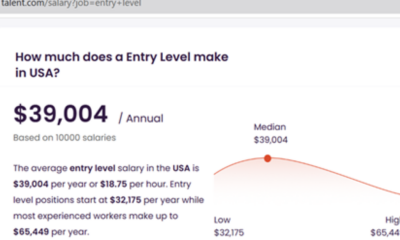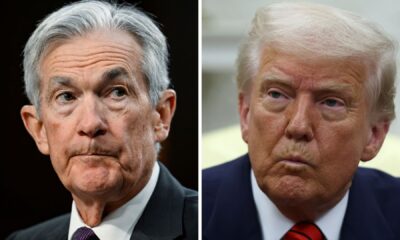IRA access, tax breaks can phase out for high earners
IRAs have a $7,000 annual contribution limit for 2024. Investors age 50 or older can save an extra $1,000, or $8,000 total this year.
Investors who save in a pretax IRA typically get a tax deduction on their contributions. However, they generally pay income tax later on earnings and withdrawals. Roth contributions don’t get the same upfront tax break: Investors fund Roth IRAs with after-tax money, but generally don’t pay income taxes on earnings or withdrawals in retirement.
Many high earners can’t make the most of these tax-advantaged accounts, though.
For example, married couples who file a joint tax return can’t contribute to a Roth IRA in 2024 if their modified adjusted gross income is $240,000 or more. The income threshold for single filers is $161,000. (Eligibility starts to phase out even before these dollar thresholds, reducing how much investors can contribute.)
Likewise, there are income limits on deductibility for pretax (also known as “traditional”) IRAs, for those who also have access to a workplace retirement plan like a 401(k).
For example, single filers with income of $87,000 or more in 2024 don’t get a tax deduction for contributions to a traditional IRA, if they are covered by a retirement plan at work.
The same holds true for married couples filing jointly. For example, if your spouse participates in a 401(k) plan at work, you don’t get a deduction on IRA contributions if your joint income is $240,000 or more. If you are the one who participates in workplace 401(k), the limit is $143,000. (Again, you may only get a partial deduction below these dollar thresholds due to income phaseouts.)
The ‘only reason’ to save in a nondeductible IRA
Lordhenrivoton | E+ | Getty Images
High earners can contribute to a so-called nondeductible IRA, however.
This is a traditional IRA, but investors don’t get a tax deduction for their contributions; they fund the accounts with after-tax money. Investors owe income taxes on growth later, upon withdrawal.
The ability to use the backdoor Roth IRA is a major benefit of these accounts, tax experts said.
It only applies to investors who make too much money to contribute directly to a Roth IRA or make a tax-deductible contribution to a traditional IRA, Slott said.
Here’s the basic strategy: A high-income investor would make a nondeductible contribution to their traditional IRA and then quickly convert the funds to their Roth IRA.
“The only reason you’d do [a nondeductible IRA] is if the intention was to do a backdoor Roth,” Slott said.
After making the nondeductible contribution, Slott recommends waiting about a month before converting the funds to a Roth IRA. This ensures your IRA statement reflects the nondeductible contribution, in case the IRS should ever require proof, he said.
Some investors may also be able to take advantage of a similar strategy in their 401(k) plan, the so-called mega backdoor Roth conversion. This entails shifting after-tax 401(k) contributions to a Roth account. However, the strategy isn’t available to everyone.
“All high wage earners should consider looking at both a backdoor Roth IRA and a mega backdoor Roth IRA if they can’t set up a Roth IRA,” said Ted Jenkin, a certified financial planner and founder of oXYGen Financial, based in Atlanta. He’s also a member of the CNBC Financial Advisor Council.
When a nondeductible IRA doesn’t make sense
A nondeductible IRA likely doesn’t make sense for investors who don’t intend to utilize the backdoor Roth strategy, according to financial advisors. In such cases, the investor would just let contributions stay in the nondeductible IRA.
For one, nondeductible IRA contributions carry potentially burdensome administrative and recordkeeping requirements, Slott said.
“It’s a life sentence,” he said.
Taxpayers have to file a Form 8606 to the IRS every year to keep track of their after-tax contributions to a nondeductible IRA, according to Arnold & Mote Wealth Management, based in Hiawatha, Iowa. Withdrawals “add more complexity” to that administrative lift, it added.
Why taxable brokerage accounts ‘are probably better’
Momo Productions | Digitalvision | Getty Images
Without a backdoor Roth in play, most investors would be better suited by saving in a taxable brokerage account rather than a nondeductible IRA, advisors said. That’s because investors using the former will likely end up paying less in tax on their profits over the long term.
Taxable brokerage accounts “are probably better in most aspects,” Slott said.
Investors who hold assets like stocks in a taxable brokerage account for more than a year generally pay a favorable rate on their profits relative to other income taxes.
These “long term” capital gains tax rates — which only apply in the year investors sell their asset — are as high as 20% at the federal level. (High earners may also owe a 3.8% “Medicare surtax” on profits.)
By comparison, the top marginal income tax rate is 37%. Investors in nondeductible IRAs are subject to these generally higher rates on earnings upon withdrawal.
While taxable brokerage account investors pay taxes each year on dividend income, such taxes are generally not enough to negate the relative tax benefits of such accounts, advisors said.
“The tax deferral of non-deductible IRAs can be an advantage for some,” according to Arnold & Mote Wealth Management. “However, we find that this is quite rare.”
Additionally, investors in taxable brokerage accounts can generally access their funds anytime without penalty, whereas IRAs generally carry tax penalties when earnings are tapped before age 59½. (There are some IRA exceptions, however.)
Taxable accounts have no required minimum distributions while the account holder is alive, unlike traditional and nondeductible IRAs.
“A taxable account provides the flexibility to add money and take money out with few limits, penalties, or restrictions,” Judith Ward, a certified financial planner at T. Rowe Price, an asset manager, wrote recently.


 Accounting7 days ago
Accounting7 days ago
 Accounting1 week ago
Accounting1 week ago
 Accounting1 week ago
Accounting1 week ago
 Economics7 days ago
Economics7 days ago
 Economics5 days ago
Economics5 days ago
 Personal Finance1 week ago
Personal Finance1 week ago
 Personal Finance1 week ago
Personal Finance1 week ago
 Economics7 days ago
Economics7 days ago













